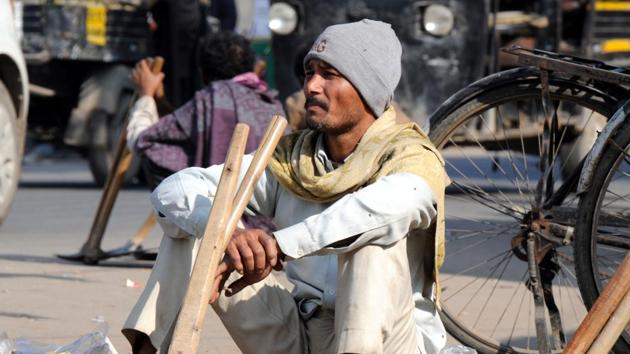Time we made Gurugram city more inclusive
The aspirations of migrant labourers are as integral to building Gurugram into a city that people desire to live in.
A city provides a sense of identity to its citizens and Gurugram prides itself as a global city, an information city, a smart city – the Millennium City. All these provide an image of a shining city, with high-rise buildings, corporate offices and malls. Gurugram has 26 shopping malls and 30 million square feet of commercial space, hundreds of condominiums and swanky hospitals. This is the aspiration, the desire and the dream.

But this identity reveals only a part of the dense complexity that makes a city. In telling the story of Gurugram, it is as important to recognise the labour that goes into continually building the edifice of the Millennium City as well as maintaining the global and aspirational lifestyle. We see the swanking tech parks and the high-rise buildings.
Like any other city, global or not, it is built upon the labour of the working class and often, the migrant as well. Further, it continues to reproduce inequalities and hierarchies embedded in Indian society. There are over 200,000 migrants or floating population in the city working as domestic and construction workers, who are barely provided services and amenities. How do we create a more inclusive city and culture in our cities? The domestic worker is as much a part of the cityscape as the software engineer; the roadside food stalls as much as a reputed coffeehouse. It is important to understand and give visibility to the reality of the construction worker who builds the high-rises, as much as those who live in them after they are built.
These workers also come to the city to earn money, find a better life as well as provide a better life for their children. Yet, we see many of the children at the construction sites. A modern Indian city should not accept young children being denied an opportunity. Nevertheless, this is as much as reality of Gurugram, as are the schools that are among the best private schools of the country.
The invisible labour that makes the city run must be recognised and made visible – the road cleaners, the construction workers, the domestic workers, the office cleaners and the people who run food stalls that provide food for a growing migrant population, among others.
Their aspirations are as integral to building Gurugram into a city that people desire to live in; their reality as true as the migrant from another state working in Cyber City, or the expat who has made Gurugram his/her home. All builders are mandated to build a certain number of apartments for members of the EWS (economically weaker section).
Unfortunately, we see many of them lying empty or tied in litigation. In some complexes, residents have objected to using the same entrance. This is very much like having separate elevators for residents and for those who are our helpers, such as domestic helps or drivers. This should be an unacceptable practice in a modern society, yet we see them continue.
All Indian cities are built on the labour of a vast diverse group of people, but only the labour of some become visible and feted. Maybe cities, as well as all those who write the story of cities, need to move out of the living rooms to the streets.
(The author works on issues of women’s safety and rights in cities)



